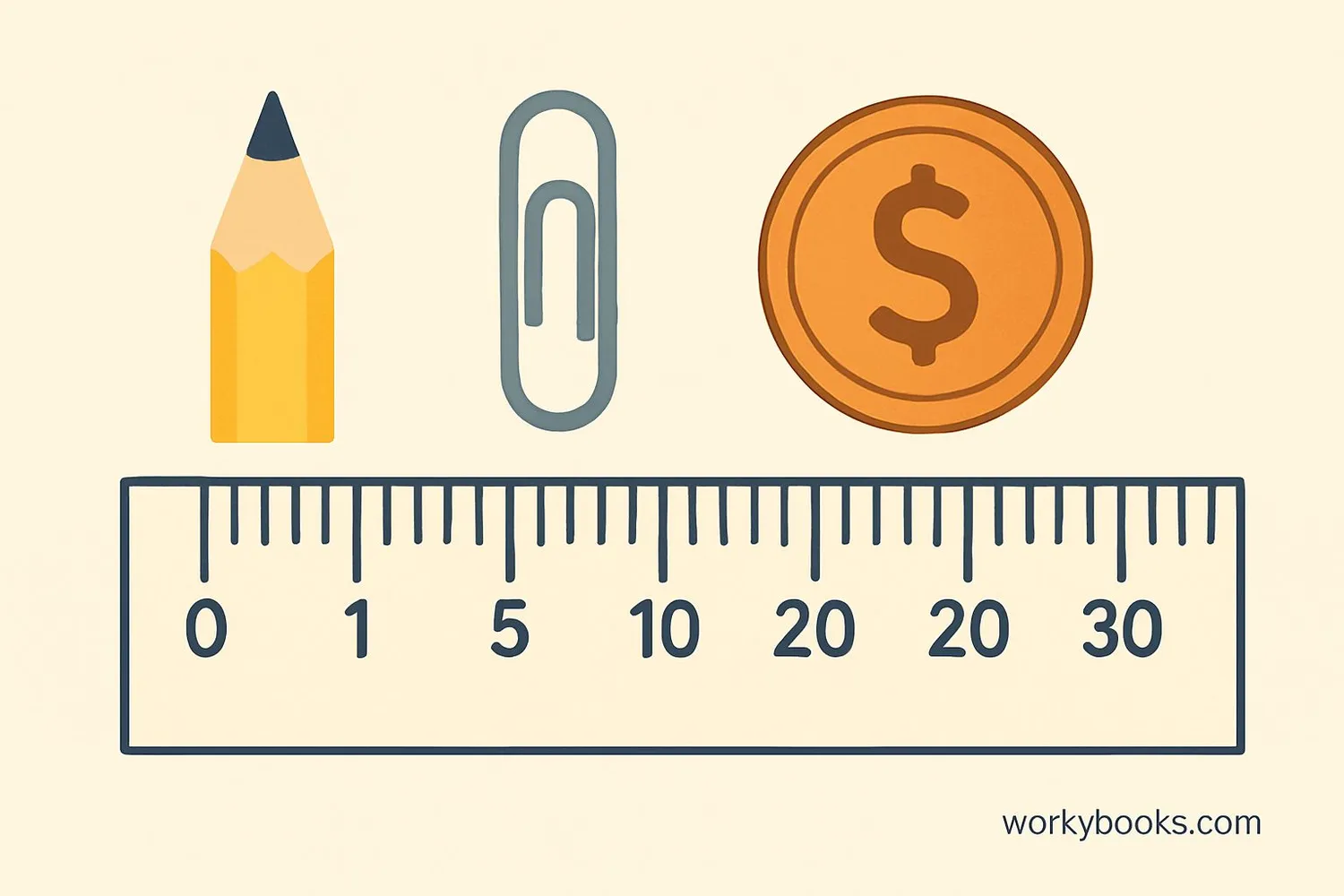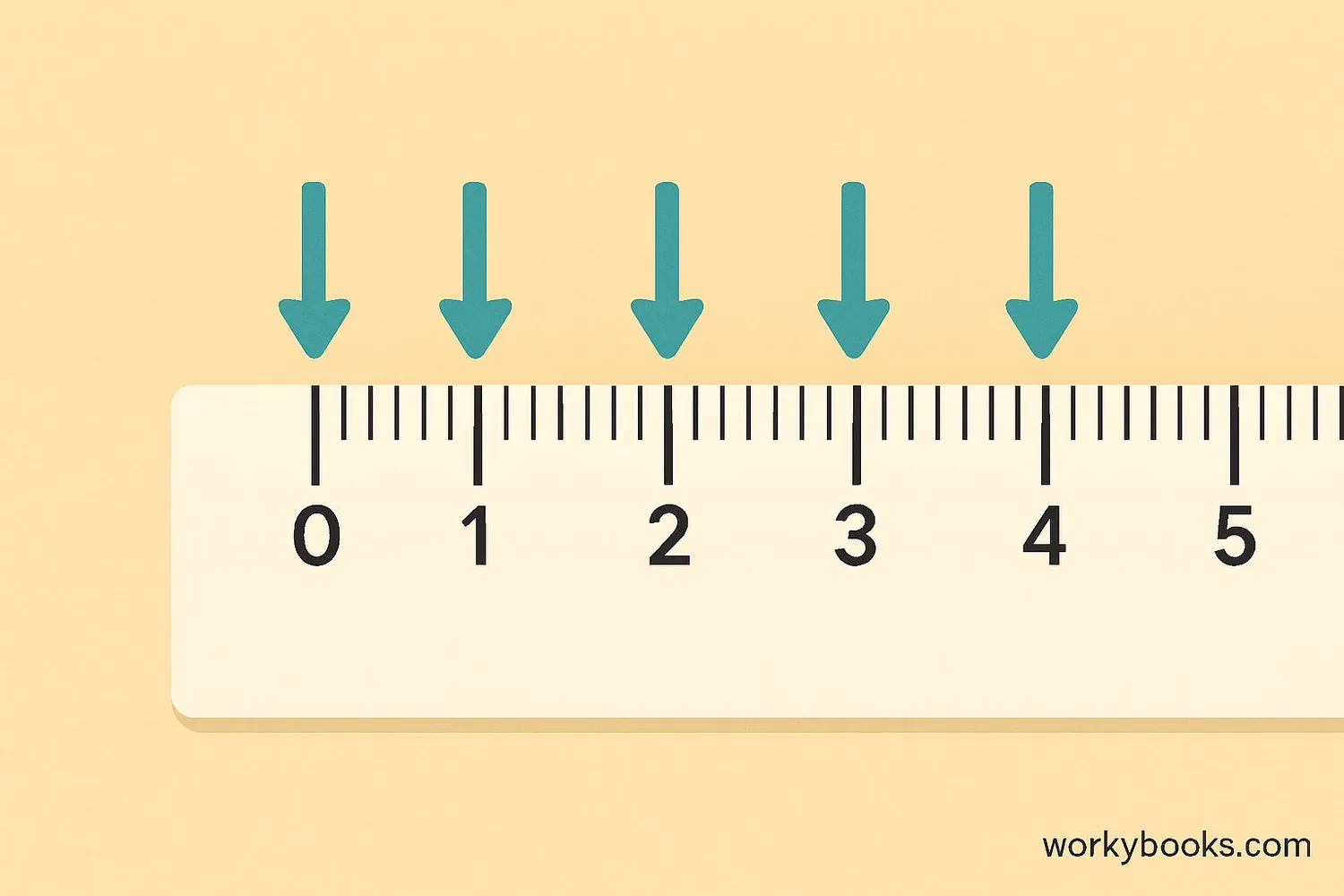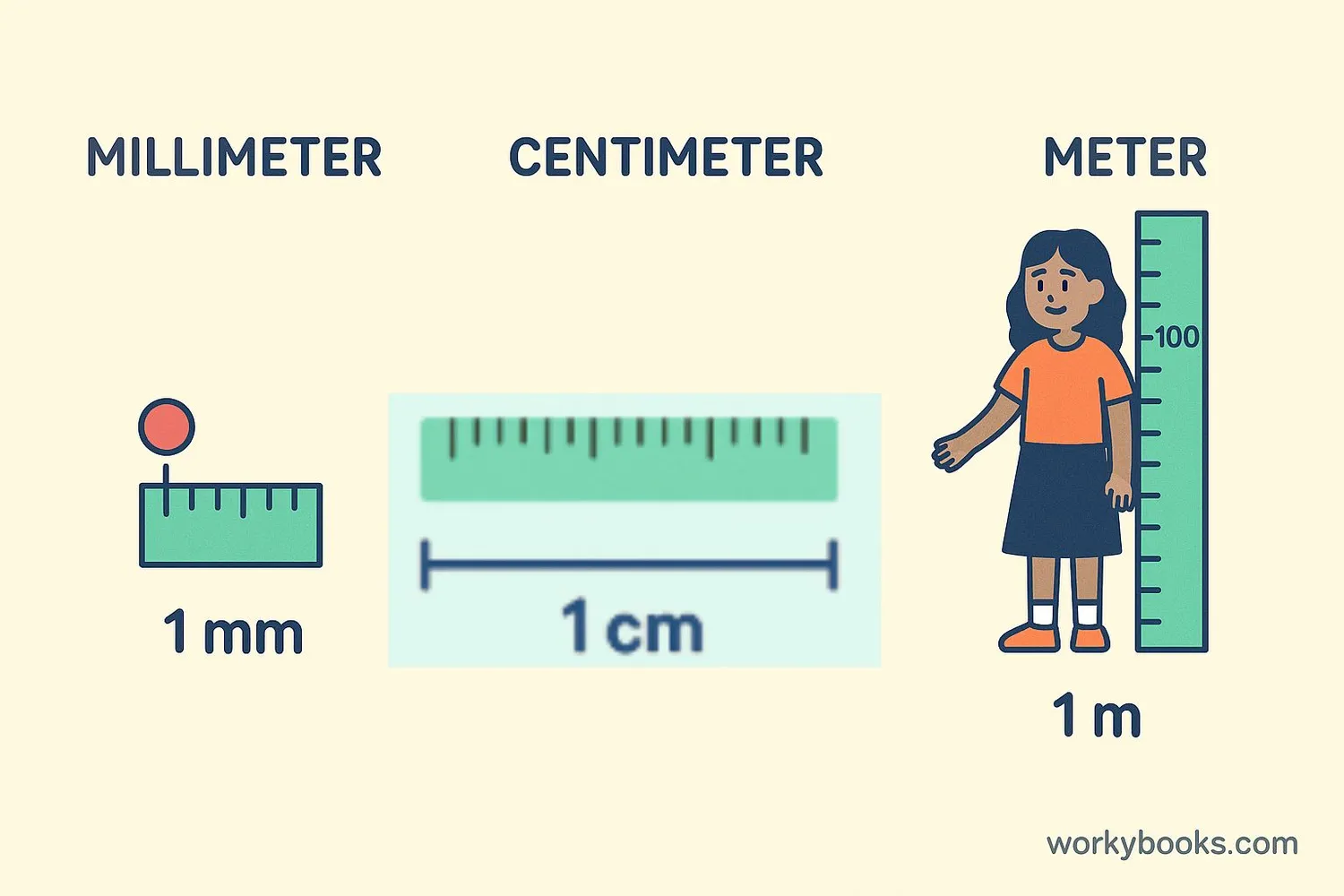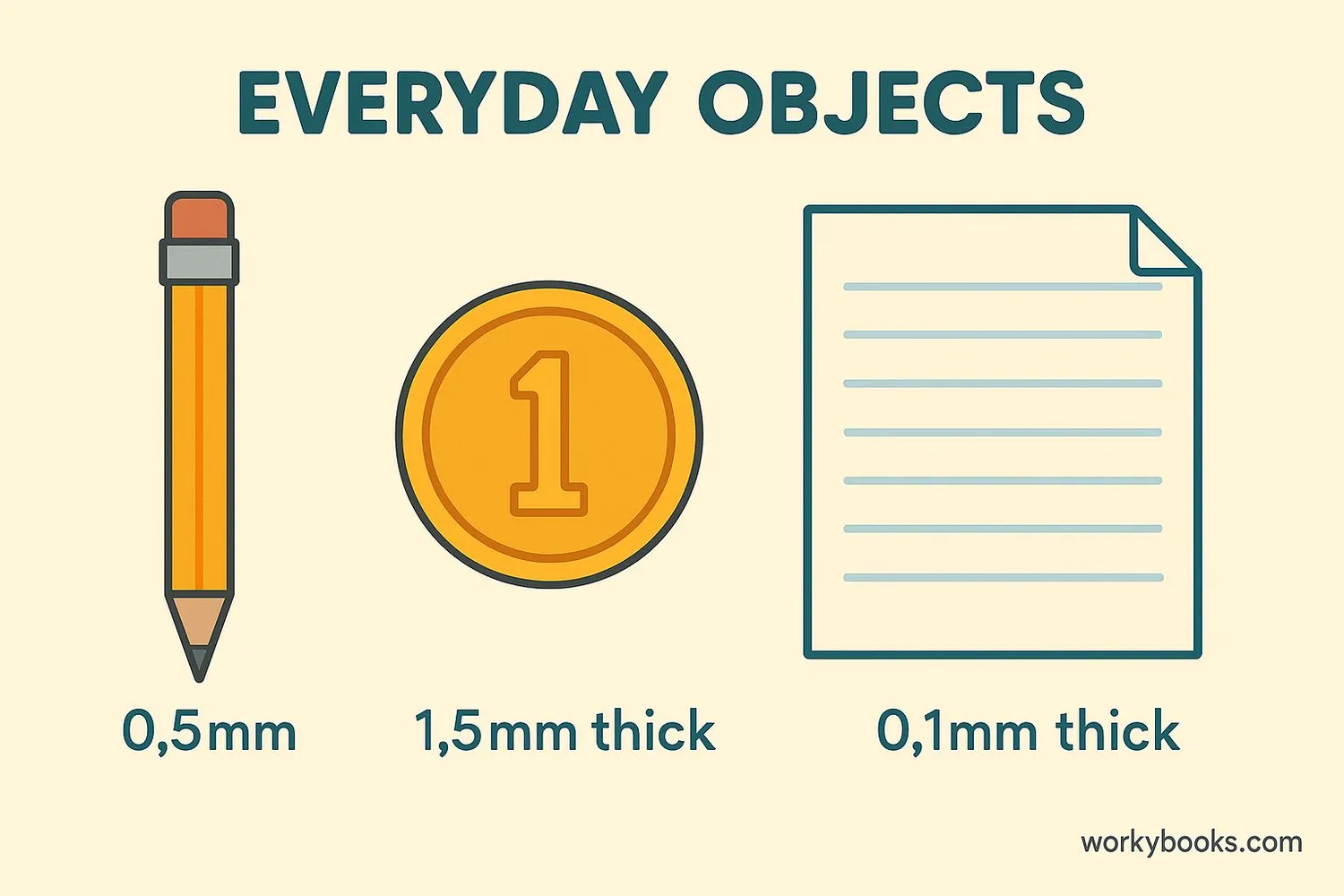Millimeter (mm) - Definition, Examples, Quiz, FAQ, Trivia
Learn about the millimeter, a small but important unit in the metric system
What is a Millimeter?

A millimeter (mm) is a very small unit of length in the metric system. The word "millimeter" comes from two words: "milli" which means one thousandth, and "meter" which is the basic unit of length. So a millimeter is one thousandth of a meter.
One millimeter is about the thickness of a credit card or a paperclip wire. It's a very useful measurement for small objects that need precise measurement.
The metric system is used by scientists and most countries around the world because it's based on units of 10, which makes it easy to convert between different measurements like millimeters, centimeters, and meters.
Key Concept
1 millimeter = 0.001 meters. There are 1,000 millimeters in 1 meter.
Measuring with Millimeters

To measure in millimeters, you need a ruler or measuring tape that has millimeter markings. On most metric rulers, the smallest lines between centimeter marks represent millimeters.
Counting Millimeters
Each small mark on a metric ruler between centimeter marks represents 1 millimeter.
Example: If an object measures 3 centimeters and 5 millimeters, how many millimeters is that total?
Step 1: Convert centimeters to millimeters → 3 cm × 10 = 30 mm
Step 2: Add the extra millimeters → 30 mm + 5 mm = 35 mm
So 3 centimeters and 5 millimeters equals 35 millimeters.
Remember
When measuring small objects, millimeters give you a more precise measurement than centimeters.
Converting Millimeters

Converting between millimeters and other metric units is easy because the metric system is based on multiples of 10. Here are the most important conversion facts to remember:
Conversion Formulas
To convert centimeters to millimeters, multiply by 10. To convert meters to millimeters, multiply by 1000.
Millimeter Conversion Chart
| Millimeters (mm) | Centimeters (cm) | Meters (m) |
|---|---|---|
| 1 mm | 0.1 cm | 0.001 m |
| 10 mm | 1 cm | 0.01 m |
| 100 mm | 10 cm | 0.1 m |
| 250 mm | 25 cm | 0.25 m |
| 500 mm | 50 cm | 0.5 m |
| 750 mm | 75 cm | 0.75 m |
| 1000 mm | 100 cm | 1 m |
Conversion Tip
When converting from larger to smaller units (like m to mm), multiply. When converting from smaller to larger units (like mm to m), divide.
Real-World Examples

Millimeters are used to measure small objects all around us. Here are some real-world examples:
Example 1: A standard pencil lead is about 0.5 millimeters thick.
Example 2: A dime coin is about 1.35 millimeters thick.
Example 3: A typical piece of paper is about 0.1 millimeters thick.
Example 4: Many insects are measured in millimeters. A ladybug might be about 8 millimeters long.
Example 5: Small electronic components like resistors and capacitors are often just a few millimeters in size.
Practice looking for small objects around you that could be measured in millimeters!
Measurement Tip
For very small measurements, scientists sometimes use even smaller units like micrometers (1/1000 of a millimeter) or nanometers (1/1,000,000 of a millimeter).
Measurement Practice Quiz
Test your understanding of millimeters with this 5-question quiz. Choose the correct answer for each question.
Frequently Asked Questions
Here are answers to common questions about millimeters:
Measurement Trivia
Discover interesting facts about measurement and millimeters:
Origin of the Metric System
The metric system was created in France during the French Revolution in the 1790s. It was designed to have standard units that were based on natural phenomena rather than arbitrary measurements.
Tiny Measurements
The smallest thing ever measured is about 0.0000000001 millimeters! Scientists study particles this small to understand how the universe works at the most basic level.
Human Hair
A human hair is about 0.05 to 0.1 millimeters thick. Blonde hair is usually thinner than dark hair, and children's hair is often thinner than adult hair.
Computer Chips
Modern computer chips have components that are just a few nanometers wide (a nanometer is 1/1,000,000 of a millimeter). This incredible precision allows billions of transistors to fit on a single chip.





